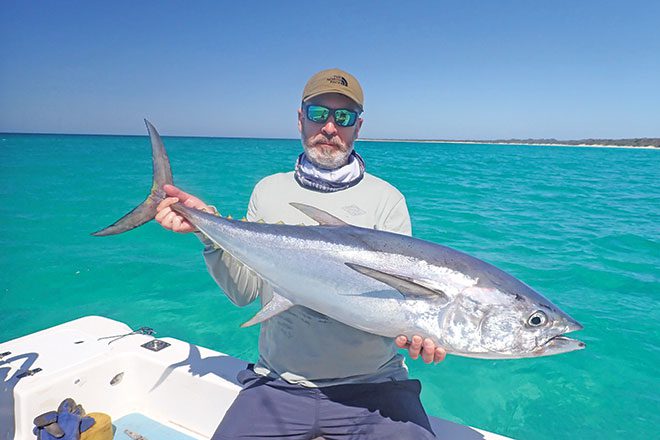Happy new year… unless you are a fishing guide. The weather continues to be challenging, and therefore, so is the fishing.
Where are the masses of spotted and mack tuna?
Where are the occasionally annoying school mackerel?
Yes, sorry, but have some wind instead – unfortunately, I spent the beginning of December hiding from wind. Thankfully, the small area I was able to fish was fish rich.
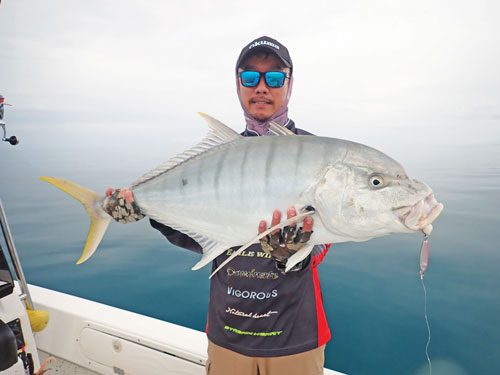
A pair of customers booked the first week of the month and scored an early Christmas gift to last ten festive seasons.
Not a glamour day to be seen in the forecast, however it was good enough and, with the fish in shallow, all we needed was some light.
We had two days of solid sunlight, with the others being from broken cloud to solidly overcast. Marlin and tuna are dark, so are easier to see in less-than-ideal lighting.
They also love to cruise on the surface – another redeeming factor. Marlin slow glide effortlessly and respond quickly to any stimulus they might sense. Their aggression is borderline berserk and will often strike more than once.
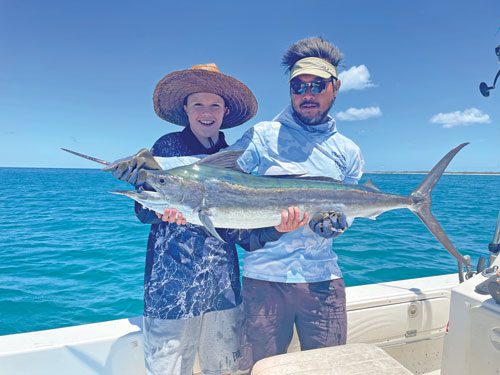
Tuna move faster and often in schools. Once they bite, they won’t strike again most likely. If they miss… well, you might get another shot, but their tendency to flee makes them more difficult to entice.
That being said, they are infinitely easier to stay attached to and land. However, they will more than likely encourage you to book in to see your chiropractor.
Marlin antics in the first moments of battle often see the lure thrown. But don’t fret, the fish might have another go.
We keep making attempts until we can’t see them anymore. The fight is usually frantic, so expect a burst of speed or two.
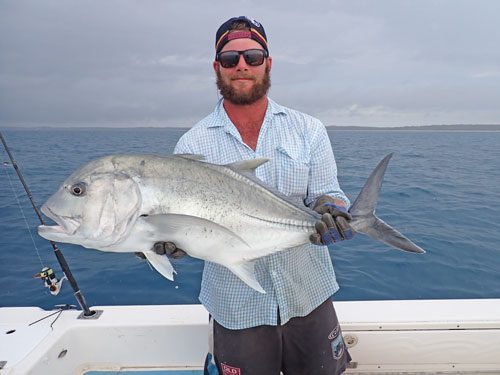
If this doesn’t happen, expect to get a beating when you attempt to land it. Be careful not to break the beak off.
I often drive around trying to encourage a few runs from the fish.
Unfortunately, the sight-fishing mayhem didn’t last and we’re back to the regular grind.
For the sakes of the holiday makers that make up a large quantity of my tours in January, I hope the surface feeders fire up. It can be an extremely slow tour without these to pad out a day of catch and release.
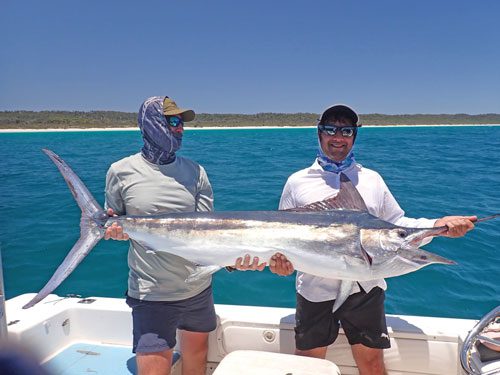
On the topic of release – again – spearing fish back into the water is something I wish to touch on. This is particularly important for tuna and mackerel.
I believe it is not the power of the spearing but the action of the water rushing through the gills.
Remember, fish breathe the dissolved oxygen in the water, not the air bubbles created by the turbulence of a powerful water entry. A smooth entry is ideal.
Often, in an attempt to power the fish into the depths as is sometimes portrayed on TV, we can turn the tail and therefore the fish flail on the surface.
I find that holding the fish head down and perpendicular above the water line then letting go is sufficient to produce a smooth head-first entry.
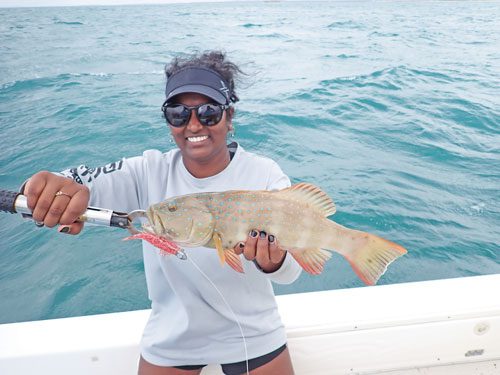
If sharks are present, it’s a bit more difficult, however a gentle torpedo angled slightly away from the boat will get the fish swimming away from the big taxmen under the boat.
Of course, this is pointless if you haven’t been responsible by not quickly landing and handling the fish with appropriate practice and tackle.
Any time the fish is easily released without excess handling is highly encouraged – another reason for one-hook lures and a de-hook tool.
De-hookers are basically a metal rod with a ‘u’ bend in the action end.
They are cheap tools and extremely effective on waterline release – I prefer them to pliers.
Let’s hope we get to see them again.
 Bush ‘n Beach Fishing Magazine Location reports & tips for fishing, boating, camping, kayaking, 4WDing in Queensland and Northern NSW
Bush ‘n Beach Fishing Magazine Location reports & tips for fishing, boating, camping, kayaking, 4WDing in Queensland and Northern NSW

